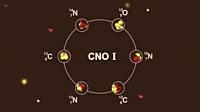Animation showing the pathology of Alzheimer's disease. Initially the view zooms in to a healthy brain, showing the millions of neurons sending and receiving signals. It then focuses on one synapse, where a nerve cell axon passes a chemical signal to the body of another nerve cell. The axon opens to show its interior, consisting of synaptic vesicles (pink) containing neurotransmitters moving up and down microtubules. Each microtubule is made up of the protein tubulin (blue), which is stabilised by another protein called tau (brown). In Alzheimer's disease the tau breaks down, damaging the microtubule and leading to the formation of disruptive tangles of abnormal tau protein. Outside the nerve cells, a common protein called amyloid precursor protein is broken up into smaller chunks of beta-amyloid (purple). These clump together in senile plaques, which also impair nerve function. The plaques and tangles are characteristic of Alzheimer's disease. The death of nerve cells leads to marked atrophy in the brain, as seen in the comparison at the end.
Details
WebID:
C00724662
Clip Type:
RM
Super High Res Size:
1920X1080
Duration:
00:01:31.000
Format:
QuickTime
Bit Rate:
25 fps
Available:
download
Comp:
200X112 (0.00 M)
Model Release:
NO
Property Release
No













 Loading
Loading